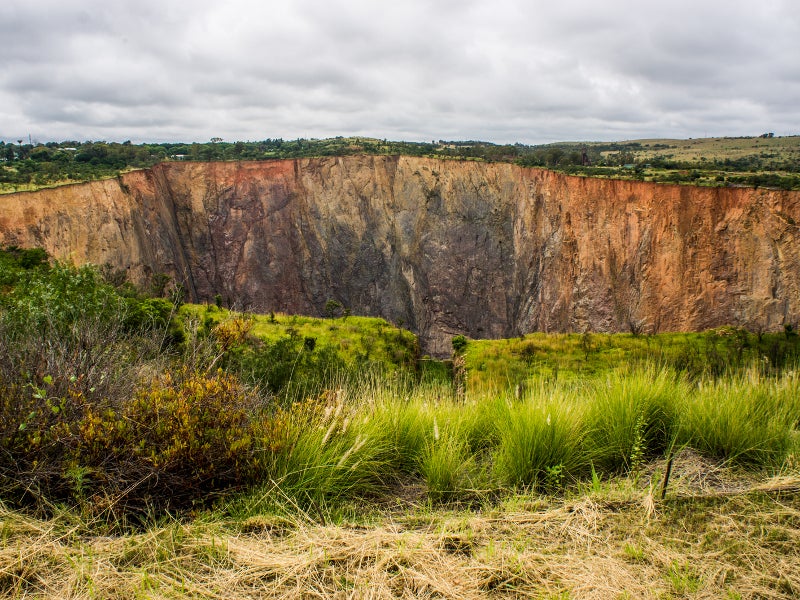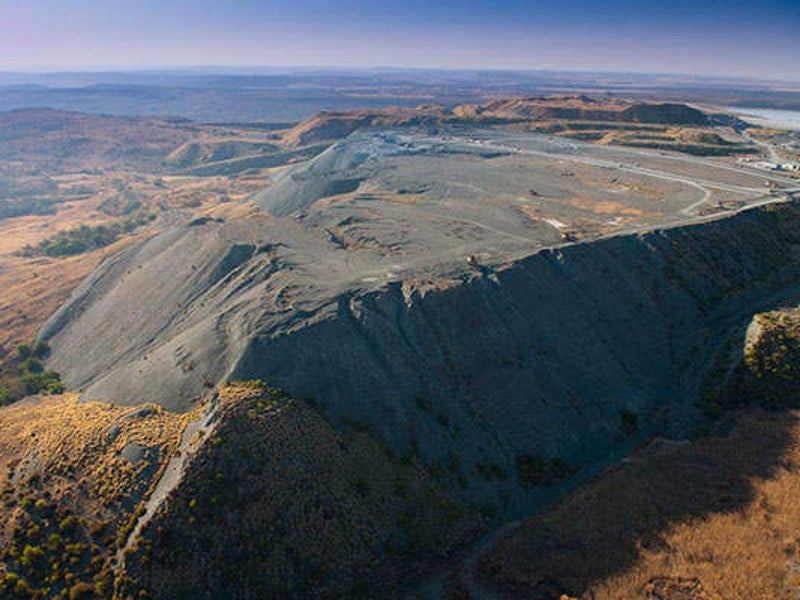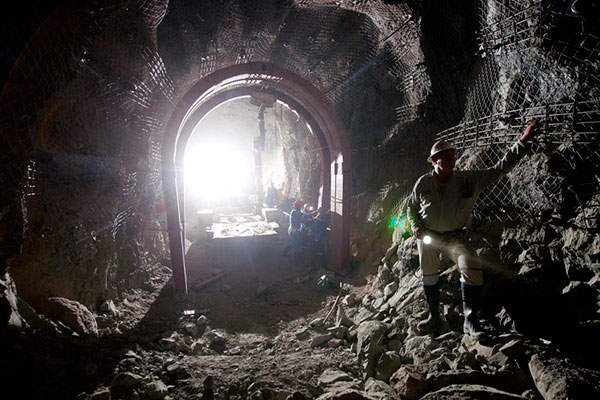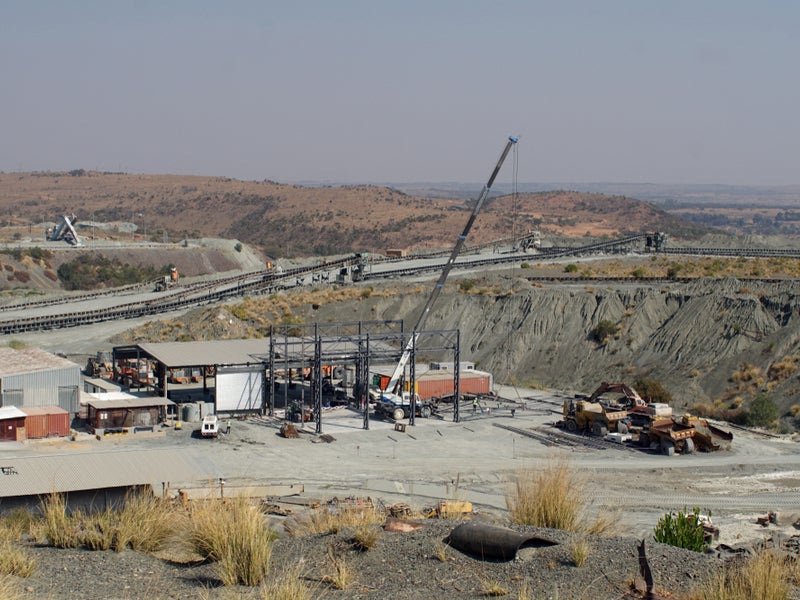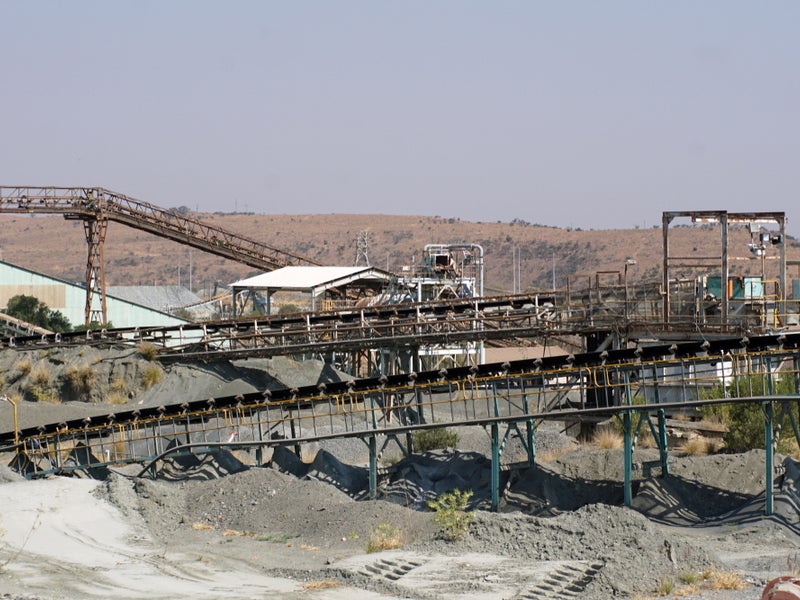The Cullinan diamond mine is located in the Gauteng province of South Africa. The site is situated 40km east of Pretoria in Cullinan. The diamond mine is also known as Premier mine.
The open-pit mining at the Cullinan diamond mine began in 1903. It is one of the major sources of blue diamonds in the world.
Petra Diamonds purchased a 37% stake in the mine from De Beers in 2008. The company increased this to 74% in 2009 by purchasing Al Rajhi’s shares.
Petra Diamonds has planned for the expansion of the Cullinan diamond mine to increase the mine’s production from 920,000 carats (ct) to 2.6 million carats (Mct) by 2019. The mine has a potential life of more than 50 years. The company’s current mining plan will witness mining activities at the site until 2030. However, the company expects the actual mine line to extend beyond 2030, based on residual resources at the mine
Geology of Cullinan mine
The Cullinan diamond mine is located on a diamond-bearing kimberlite pipe. The carrot-shaped pipe, with a volcanic neck, is considered to be the largest kimberlite pipe of the region. It was first mined in 1871, the mining site is currently referred to as Kimberley’s big hole.
The surface area of the mine is 32ha. The length of the big hole is 1,000m and breadth is 400m. At 500m level below the ground, it narrows down to 21ha. The depth of the mine is 190m from the surface.
The Cullinan pipe has three types of kimberlite, namely brown, grey and black (hyperbyssal).
Diamond reserves
The diamond mine has a reserve base of 203.7Mct. The reserve estimates are based on block cave depletion modelling and external waste. The planned expansion will increase the reserve estimate.
As at 30 June 2019, the mine had 45Mt of probable reserves and 17.67Mct of contained diamonds. The mine has a gross diamond resource of 154.9Mct.
Production at Cullinan
The Cullinan diamond mine is one of the world’s well-known producers of diamonds. The largest rough diamond gem of 3,106ct was produced here.
The acquisition of the mine led Petra Diamonds to discover world-class diamonds, which includes a 39ct blue diamond, a 26ct blue diamond and a 507ct white diamond.
The mine has produced more than 350Mt of ore yielding nearly 120Mct of diamonds. It has reprocessed more than 75Mt of coarse tailings material and yielded 20Mct of diamonds.
Production increased to 1,655,929ct from 1,368,720ct in FY 2018. The underground recovered run-of-mine grade increased from 35.9 carats per hundred tonnes (cpht) in FY 2018 to 38.6cpht in FY 2019 and it will remain between 38cpht to 42cpht in 2020. The production increase was supported by ROM throughput increasing from 3.7Mt to 4.1Mt during the period.
Petra Diamond’s expansion plans
Petra Diamonds has planned for a major expansion of the diamond mine. The C-Cut expansion plan includes the deepening of Shafts 1 and 3, related infrastructure to the shaft and planned level development to the Cullinan ore body.
The 350m-deep existing shaft 1 will be deepened to 920m. It will lift up the ore and waste from the new C-Cut phase 1 block once the process of deepening completes.
The 60m-deep existing shaft 3 will be deepened to 904m. It will take workers and material to and from the new C-Cut phase block 1.
A new block cave will be opened in the C-Cut phase 1 of the Cullinan Kimberlite pipe. The C-Cut phase 1 area is located 200m below the existing operations. The new block will receive the C-Cut reserves.
In FY 2020, the contribution from the C-Cut Phase 1 is expected to be 3.5Mt while an additional 0.7Mt will be obtained mainly from the CC1E and remnant B-Block areas.
Murray & Robert Cementation will be responsible for all engineering requirements. ABB will take the charge to upgrade the winder and ropes.
Mining and processing at Cullinan diamond mine
Petra Diamonds uses the block cave mining method to develop underground resources. In this method, a drilling level is built-up through which the ore body is cut by drilling and blasting.
Once a large area is undercut, caving is started. Mining works are also done at the undercut level. The mining work includes long-hole drilling, blasting, charging and tramming of required ore.
The production level is located 15m below the undercut level and tunnels are bored into the orebody at the level. Draw points are developed on these tunnels and raise-bored.
A draw bell is built-up to receive the caved ore. The caved ore then flows into the draw point. Load haul dump trucks load the ore and carry it out of the orebody. Nearly 43% of rocks are extracted to carry out the mining operation.

